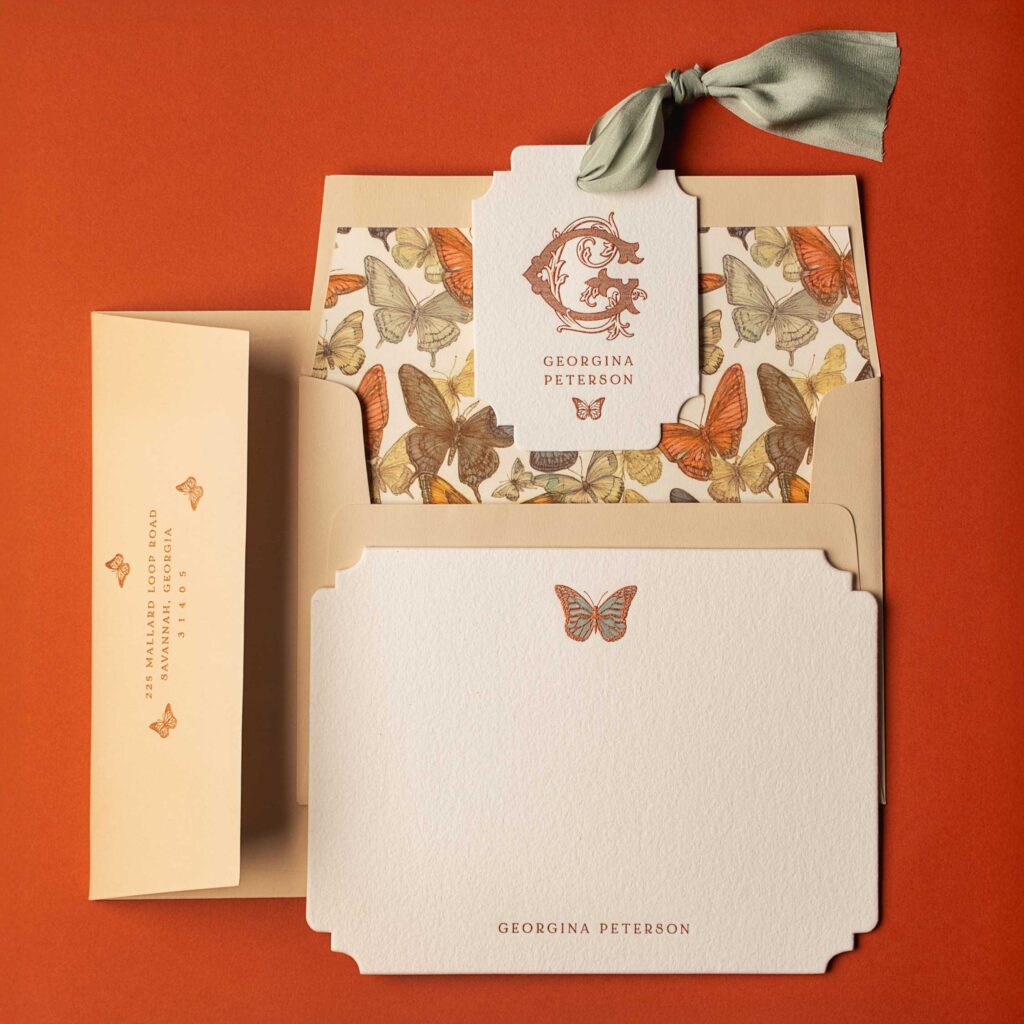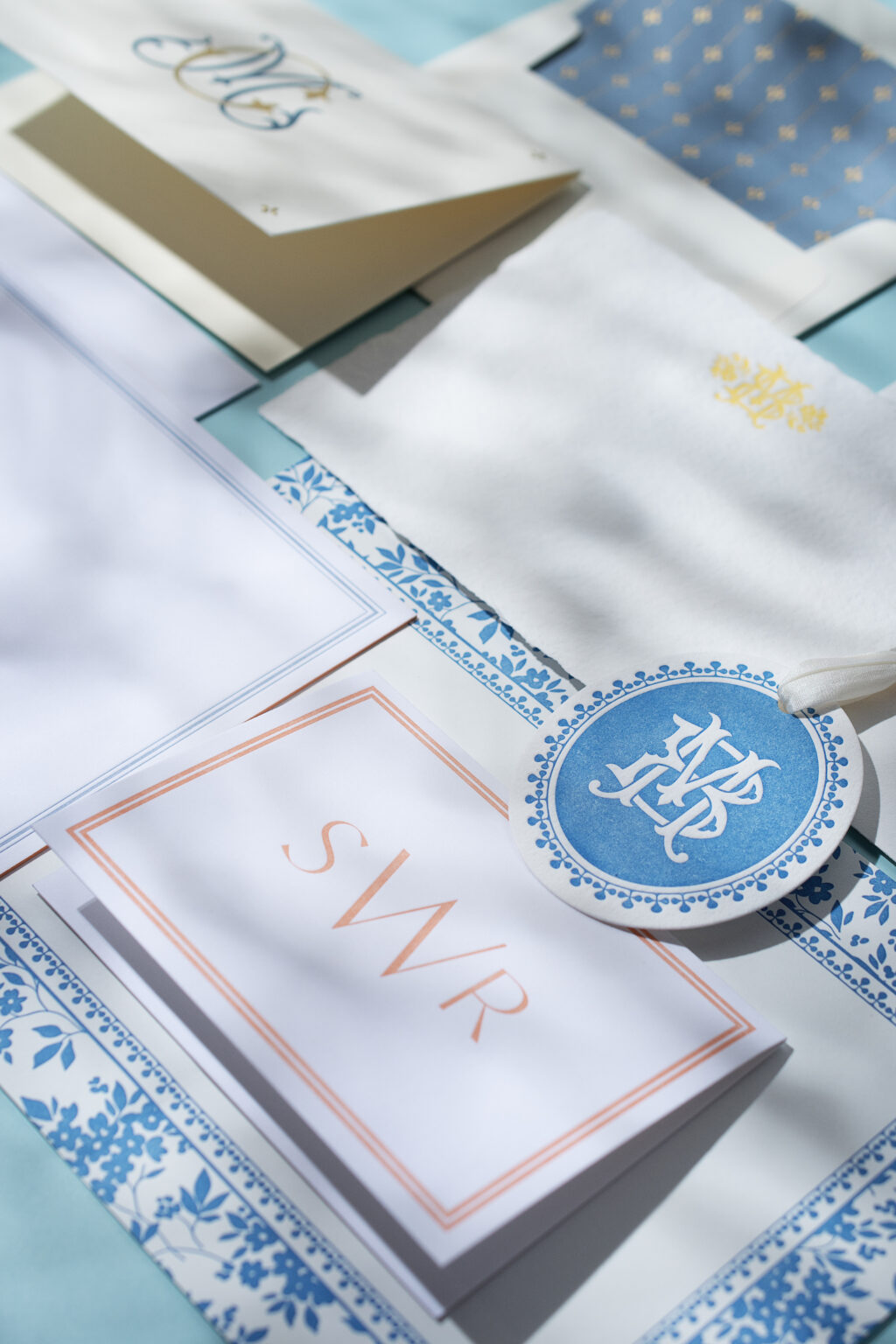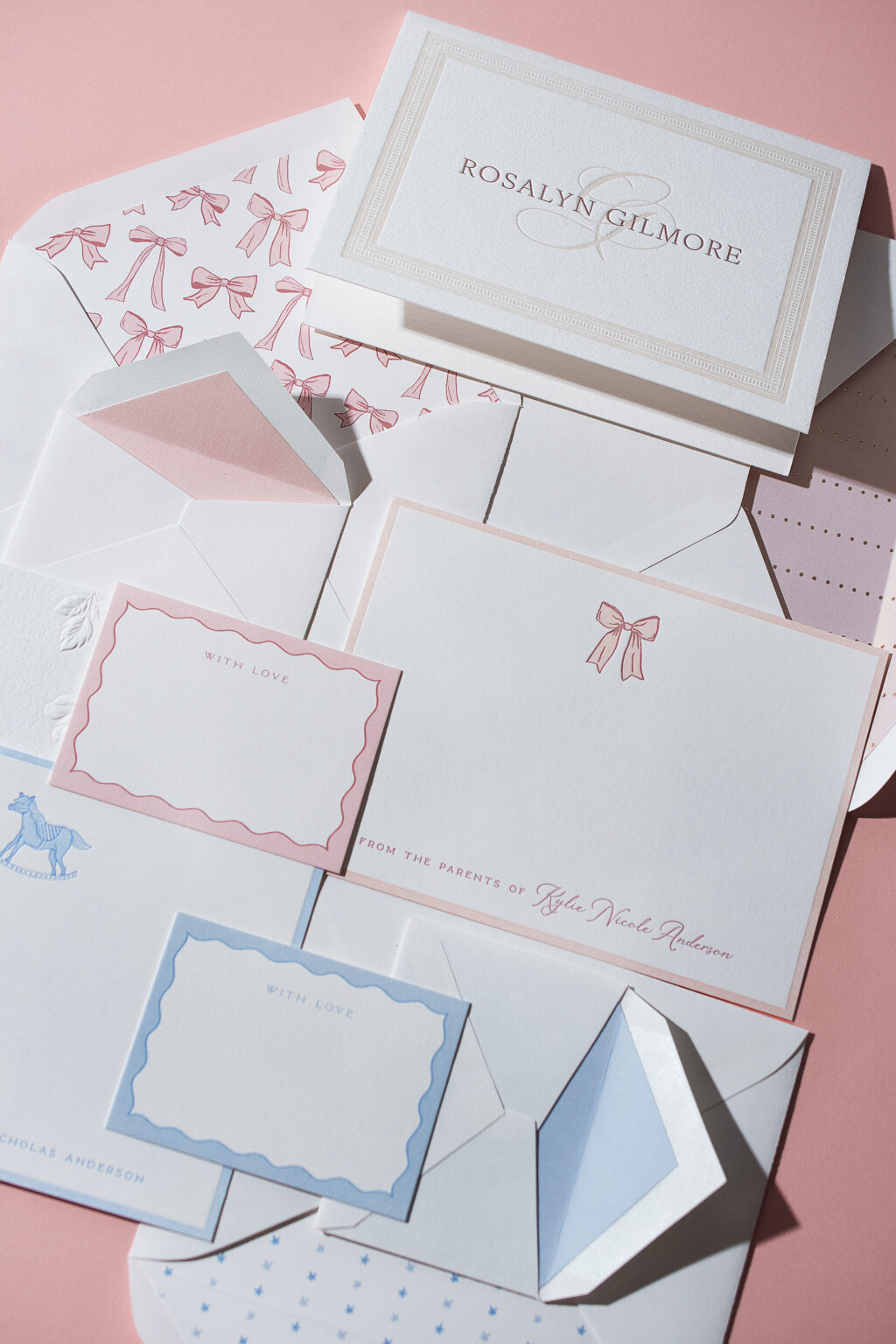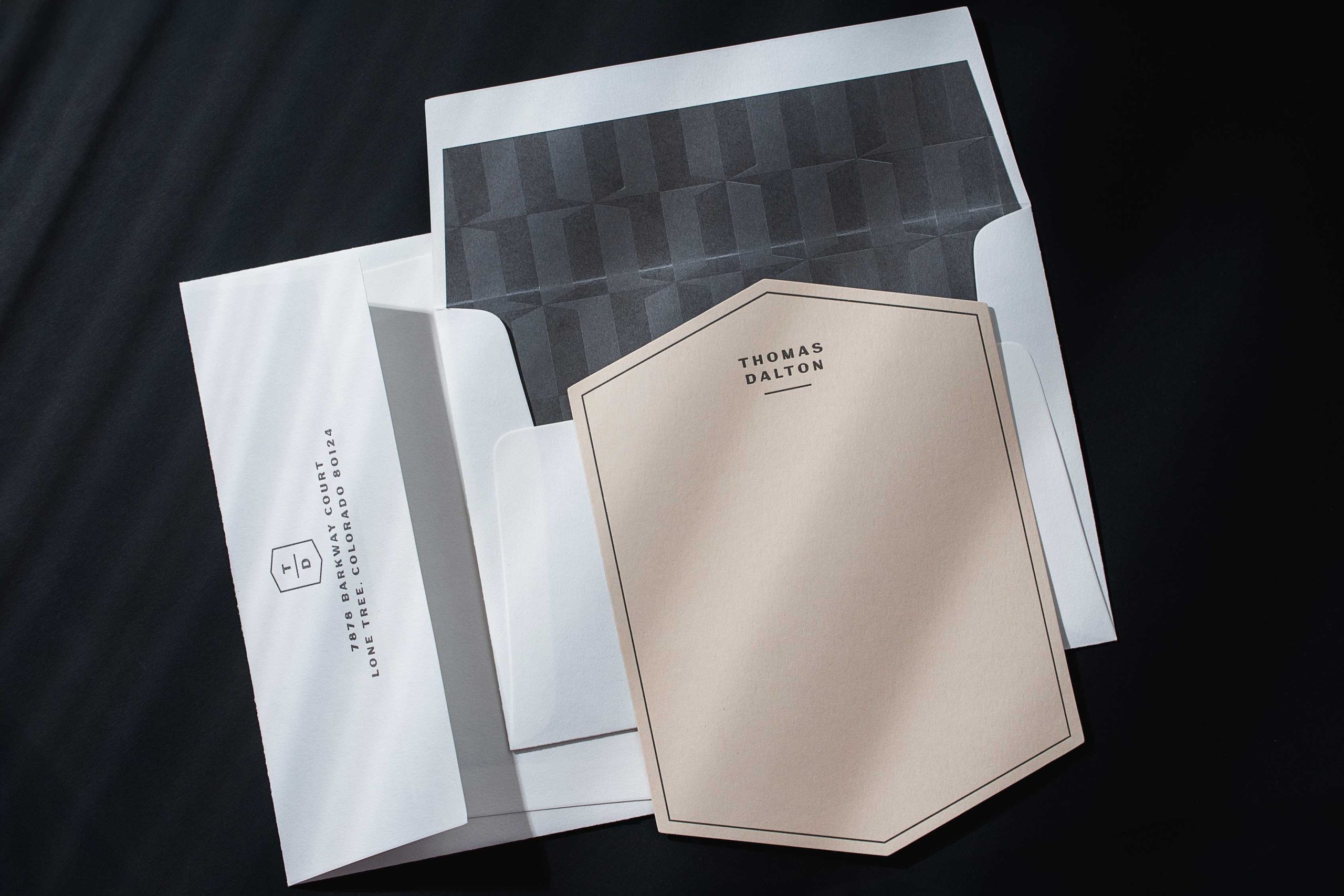Understanding Social Stationery Etiquette

Social stationery or personalized stationery is gaining popularity, and for good reason. A heartfelt handwritten note perfectly conveys your sentiment, allowing you to connect with the recipient. Custom stationery has long been the standard for weddings, and many people are realizing the benefit of keeping personalized stationery on hand.
We recently released 20 brand new social stationery suites as part of our mid-year release. We also added new envelope liner patterns and a Monarch envelope! Learn more about the inspiration behind these new designs.
All social stationery orders receive a 20% discount off retail pricing. Social stationery pieces include flat and folded notes, calling cards, lettersheets, and gift tags.
Social Stationery Etiquette


1. Choosing the Right Stationery:
- Formal vs. Informal:
Formal stationery is generally used for more professional or significant occasions, while informal stationery is suitable for casual notes to friends and family. - Personalization:
Consider whether to use your full name, initials, or a monogram on your stationery. - Style:
Choose stationery that reflects your personal style and the tone of your message. You can opt for embossed stationery, colored paper, or more modern designs. - Ink Color:
Black or dark blue ink is considered more formal, while other colors can be used for casual notes.
2. Considering the Recipient:
- Relationship:
If you’re writing to someone you’re on a first-name basis with, you might choose a more casual style. - Professional or Formal:
When addressing professionals or people you’re less familiar with, using formal stationery and titles (if appropriate) is important.
3. Word Choice and Tone:
- Formal:
For formal occasions, use proper titles, formal greetings (e.g., “Dear Mr./Ms. Last Name”), and a more formal tone. - Informal:
For casual notes, you can use nicknames, casual greetings (e.g., “Hi”), and a more relaxed tone. - Spelling:
Always spell out words in full when writing to someone of a higher social standing. - Avoid Abbreviations:
Avoid abbreviations unless they are common and easily understood.
4. Examples of Social Stationery Use:
- Thank You Notes: Always send a thank you note for gifts, hospitality, or other acts of kindness.
- Invitations: Use formal or informal stationery depending on the type of event (e.g., formal wedding invitation vs. casual birthday party invitation).
- Condolence Notes: Use a formal and compassionate tone when sending a condolence note.
- Birthday Notes: Use informal stationery and a cheerful tone when sending a birthday note.
5. Etiquette Considerations:
- Handwriting:
Always write thank you notes and other personal notes by hand. - Timing:
Send thank you notes promptly, ideally within a week or two of receiving a gift. Address:
It’s generally considered polite to hand-address envelopes, especially for formal occasions.
6. Where to Write Your Message:
Flat notes should be handwritten on one side only. Folded notes, often referred to as informals, should be written on the inside only, but it is appropriate, if you need more space, to write on the top inside of the card rather than the back.

Create Your Own Social Stationery
Check out our social stationery designs. Like all of our designs, the social stationery designs are customizable. You can change the fonts, paper, printing methods, colors, envelope liner, and more to create something unique, or you can create your very own stationery design. Contact us to learn more and create your social stationery.
